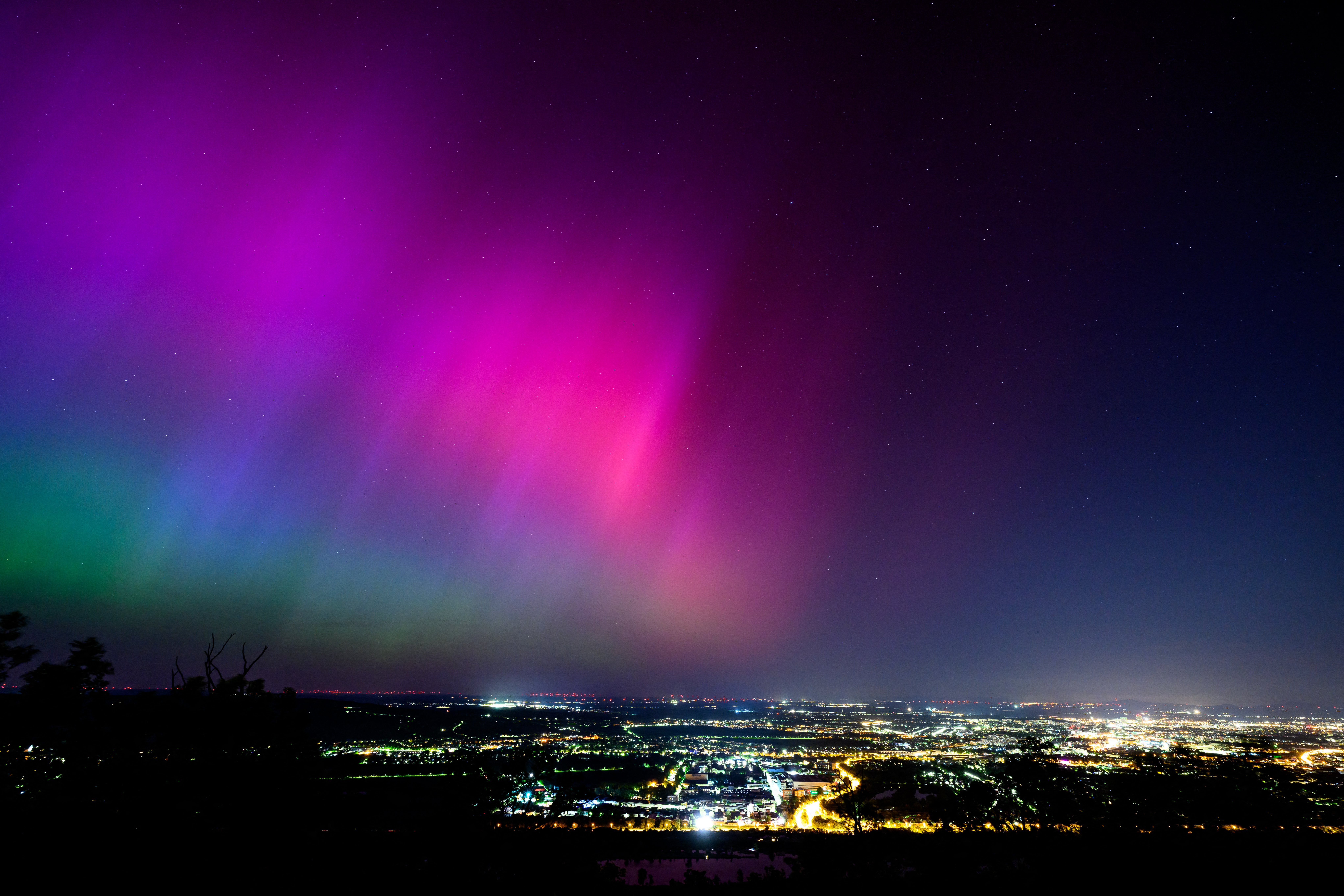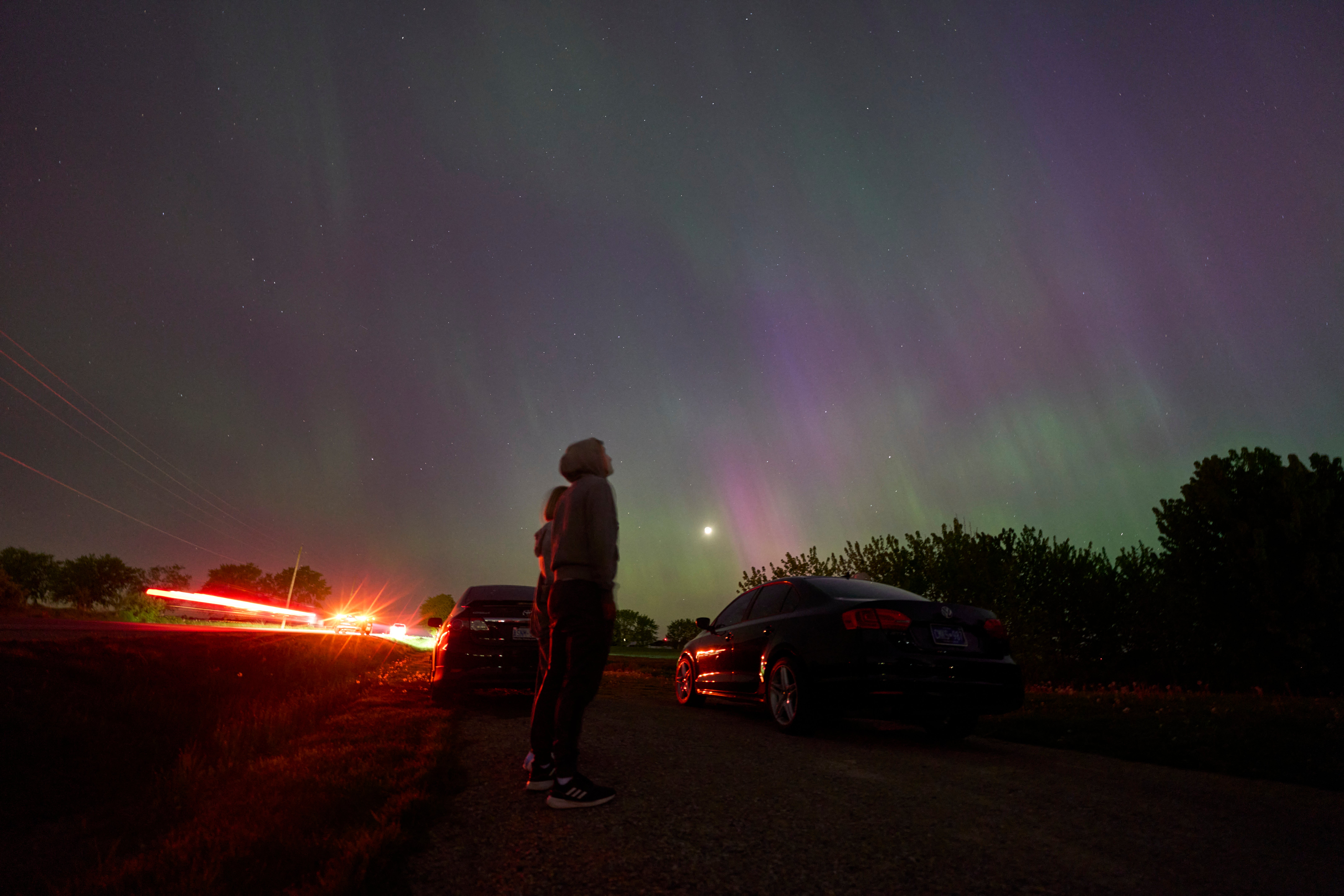Solar storm brings ‘stunning’ Northern Lights across UK skies
More displays possible over next few days, researchers say
Your support helps us to tell the story
From reproductive rights to climate change to Big Tech, The Independent is on the ground when the story is developing. Whether it's investigating the financials of Elon Musk's pro-Trump PAC or producing our latest documentary, 'The A Word', which shines a light on the American women fighting for reproductive rights, we know how important it is to parse out the facts from the messaging.
At such a critical moment in US history, we need reporters on the ground. Your donation allows us to keep sending journalists to speak to both sides of the story.
The Independent is trusted by Americans across the entire political spectrum. And unlike many other quality news outlets, we choose not to lock Americans out of our reporting and analysis with paywalls. We believe quality journalism should be available to everyone, paid for by those who can afford it.
Your support makes all the difference.A powerful solar storm has led to a stunning and rare display of Northern Lights across the UK and the rest of Europe, with observers sharing images of the dazzling night sky on Friday.
Northern lights, also known as aurora borealis, could be spotted in Whitley Bay on the northeast coast, Essex, Cambridgeshire, Liverpool, Kent, Norfolk, with sightings as far south as Sussex.
People also reported catching the spectacle in central Europe, in countries such as the Czech Republic and Germany, after a severe solar storm hit the Earth’s atmosphere on Friday.
Friday’s celestial display was more pronounced due to a class 5 “extreme” geomagnetic storm, according to the US National Oceanic and Atmospheric Administration (NOAA).
The Northern Lights are vibrant curtains of light seen in the night sky, ranging from green to pink and scarlet. They are caused by charged particles from the sun interacting with gases in the Earth’s atmosphere.
The most spectacular displays happen when the sun releases large clouds of particles called “coronal mass ejections [CMEs]”.
“Aurora activity may remain enhanced after this, given the potential for further Earth-directed CMEs in the coming days,” the Met office noted.
Such geomagnetic storms are the strongest level to hit Earth, potentially affecting power grids, communications, and GPS.
The last time a solar storm hit Earth was in October 2003, when it caused power outages in Sweden.
“I feel like I am having a religious experience – or an alien abduction. Not sure which,” science teacher from England, David Boyce wrote on X.
“It was absolutely stunning to see,” Kathleen Cunnea from Essex said.
Another user wrote on X: “Unbelievable, no words.”
Sightings were reported in Ireland as well, with the weather service Met Eireann posting images of the lights over Dublin and above Shannon airport in County Clare.
In the US, the aurora could be seen as far south as Alabama and southern California.
Several skywatchers in the US, UK, and many other parts of Europe took to social media to share their images of the dazzling sky.
The space weather phenomenon came due to at least four coronal mass ejections (CMEs), which are large amounts of plasma and magnetic flux emitted from the Sun.

Auroras occur when these charged particles from the Sun interact with gases in the Earth’s atmosphere as they travel along the planet’s magnetic field.
When the intensity of the emission from the Sun is stronger, the display may reach a larger area, extending further South.
The effect is most pronounced near the Earth’s magnetic poles. In the northern hemisphere, auroras are typically seen between latitudes 60 and 75 degrees.
The Sun is currently at the height of its 11-year cycle known as the Solar Maximum when the number of sunspots and the intensity of solar activity is expected to reach a peak.
This means solar storms are likely to cause more auroras in the future.

“This solar storm did not disappoint, and it may not yet be over. Though this may be the strongest of them, there are still other storms still on their way to Earth,” space weather physicist Tamitha Skov posted on X.
“This means more spectacular displays over the next few days are possible! Thanks to all Space Weather field reporters, who shared their photos and moments like this tonight. You made this community magical!” she said.
Met office spokesman Stephen Dixon said that “conditions could continue on Saturday night, but we still have to work out some details on where exactly that will be”.
Subscribe to Independent Premium to bookmark this article
Want to bookmark your favourite articles and stories to read or reference later? Start your Independent Premium subscription today.

Join our commenting forum
Join thought-provoking conversations, follow other Independent readers and see their replies
Comments